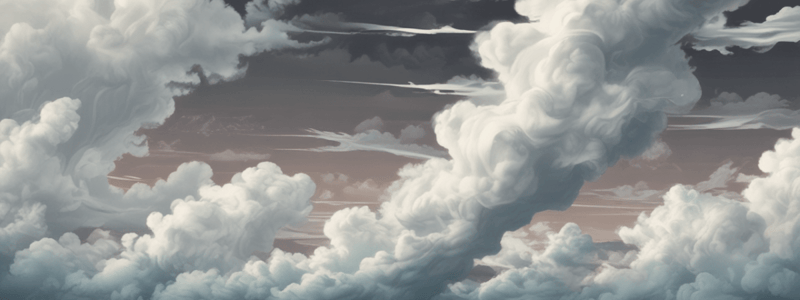Podcast
Questions and Answers
What type of clouds are typically associated with a warm front?
What type of clouds are typically associated with a warm front?
- Stratus clouds (correct)
- Cumulus clouds
- Nimbostratus clouds
- Cirrus clouds
How is an occluded front represented on a weather map?
How is an occluded front represented on a weather map?
- Red line with half circles
- Blue line with squares
- Purple line with triangles (correct)
- Green line with dots
What causes large amounts of precipitation associated with an occluded front?
What causes large amounts of precipitation associated with an occluded front?
- Warm air moving downward
- Warm air forced upward by cold front (correct)
- Cold front moving slower than warm front
- Absence of moisture in the warm air
Where do warm fronts typically form in the United States?
Where do warm fronts typically form in the United States?
What type of weather is usually experienced behind an occluded front's movement?
What type of weather is usually experienced behind an occluded front's movement?
What happens when an occluded front forms?
What happens when an occluded front forms?
Which direction do both cold and warm fronts move in an occluded front?
Which direction do both cold and warm fronts move in an occluded front?
What does the symbol for a warm front look like on a weather map?
What does the symbol for a warm front look like on a weather map?
What type of precipitation is usually associated with warm fronts?
What type of precipitation is usually associated with warm fronts?
Why do occluded fronts typically form large amounts of precipitation?
Why do occluded fronts typically form large amounts of precipitation?
Flashcards are hidden until you start studying




